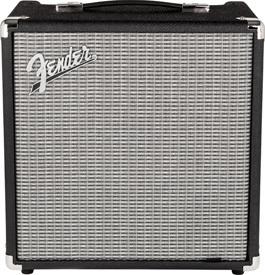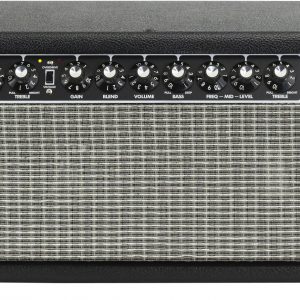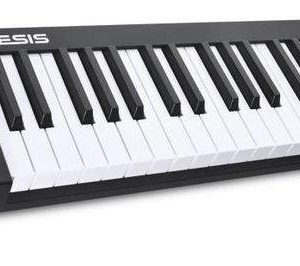Artists Fail by Marketing Like They’re Famous; Here’s How to Start Building Demand
In an era where social media has transformed the music industry into a battleground for attention, many artists find themselves caught in a paradox: they are told to “market like they’re already famous,” yet their audiences remain indifferent. This disconnect between expectation and reality is not just a failure of strategy—it’s a fundamental misunderstanding of how marketing works at different stages of an artist’s career. The advice to “just put yourself out there” rings hollow when the result is silence, frustration, and the slow erosion of creative motivation.
The Myth of Instant Fame: Why Marketing Like You’re Already Famous Fails
Most artists who struggle with visibility are not failing because they lack talent or effort. Rather, they are falling into a common trap: treating marketing as if they already have an audience waiting to embrace them. This approach mirrors the misstep of a restaurant opening its doors and expecting lines around the block on day one without first building awareness.
Consider the scenario of two artists performing at the same stadium. One is a global superstar; the crowd chants their name before the first note is played. The other is an unknown, stepping onto the stage to silence instead of applause. The difference isn’t in the quality of music—it’s in the audience’s relationship with the artist. Marketing for a signed, established act focuses on retention and monetization, while marketing for an undiscovered artist must begin by earning that relationship from scratch.
This is where many artists go wrong. They assume that dropping a song, posting clips, or paying for ads will automatically generate demand. But in reality, these actions are akin to handing out flyers at a concert without first explaining who you are. The audience needs context, connection, and a reason to care before they’ll even listen to your music.
Phase One: Attraction—Getting People to Notice You
The journey from obscurity to success begins with attraction, the process of capturing attention in a world where users scroll past thousands of content creators every day. When no one knows you, your goal isn’t to sell your music—it’s to make people stop scrolling and pay attention to you as a person.
This phase hinges on storytelling and relatability. Instead of launching with a song, focus on sharing the raw moments that led to it: the struggles, the inspiration, the emotions behind your art. Authentic content resonates far more than polished promotional material. For example, DD Osama built his fanbase not just through his music but by candidly sharing his journey—his pain, his triumphs, and his vulnerabilities. His fans didn’t connect with a song first; they connected with the person behind it.
Similarly, engaging with trends is crucial. Platforms like TikTok and Instagram thrive on real-time interaction, and participating in viral challenges or reacting to popular content can help artists insert themselves into relevant conversations. The key here is authenticity: people are more likely to follow someone who feels like a friend than a brand trying too hard to sell itself.
Phase Two: Connection—Turning Viewers Into Fans
Once you’ve captured attention, the next challenge is converting that interest into loyalty. This is where many artists falter, mistaking curiosity for commitment. Attention alone isn’t enough; you need to build connection by showing up consistently and offering value beyond a single song or video.
Consistency is the cornerstone of this phase. Regular posting, storytelling, and sharing insights about your creative process help audiences see you as a real person rather than a faceless entity. For example, Playboy Cardi didn’t just perform; she built an entire movement around her persona, creating a cultural identity that fans could adopt. Her followers weren’t just listeners—they were part of a community defined by shared values and aesthetics.
Another critical element is differentiation. In a saturated market, artists must carve out a unique niche. Whether through visual storytelling (as seen in the work of Heat, who meticulously crafted an aesthetic around his music), or through unconventional content (like behind-the-scenes videos or live Q&A sessions), artists need to stand out by offering something that resonates deeply with their target audience.
Phase Three: Promotion—Selling With Trust, Not Noise
Once you’ve built a foundation of trust and connection, promotion becomes the final phase where your music can finally reach its full potential. But this stage is not about loud noise or spamming links—it’s about strategic anticipation and engagement.
Think of promotion as the culmination of phases one and two: now that people know who you are and care about your journey, you can introduce your music with a sense of purpose. Teasing your work through skits, behind-the-scenes content, or interactive challenges helps build hype organically. For instance, Destroy Lonely has mastered this approach by creating an entire visual and narrative universe before releasing his songs, ensuring that fans are already invested when the music drops.
Even after a release, nurturing the audience is essential. Engaging with comments, responding to feedback, and maintaining momentum post-release ensures that your work doesn’t get lost in the noise of social media’s endless scroll. This phase requires patience and a long-term mindset, as success isn’t built overnight but through sustained effort and trust-building.
The Bigger Picture: How This Shift Could Redefine the Music Industry
The implications of this marketing shift extend beyond individual artists—it could reshape how the music industry identifies and nurtures talent. For decades, the path to fame was dictated by record labels, gatekeepers, and traditional media. Today, that power is increasingly in the hands of artists themselves, but only if they understand the nuances of modern audience behavior.
This approach—starting with attraction, building connection, and ending with promotion—could lead to a more democratized music landscape where success is measured not by initial visibility but by sustained engagement. It also challenges platforms like Spotify and YouTube to rethink how they support artists: rather than prioritizing algorithmic virality, they might need to invest in tools that help creators build genuine communities.
Furthermore, this strategy could reduce the pressure on young artists to “hustle” in ways that burn them out. By focusing on long-term relationships rather than short-term gains, artists can cultivate a more sustainable career without sacrificing their creative integrity.
Conclusion: From Obscurity to Unstoppable
The difference between being unknown and being unstoppable isn’t luck—it’s understanding the right marketing strategy for your stage of growth. Artists who continue to market like they’re already famous will remain invisible in a crowded world, while those who embrace the process of building demand from scratch will eventually rise above the noise.
As this article shows, the journey from obscurity to success requires patience, adaptability, and a willingness to start small. By focusing on attraction first, connection next, and promotion last, artists can create an audience that doesn’t just listen to their music but lives it.
For those ready to stop chasing algorithms and start building real relationships, the path is clear: it’s time to market not as if you’re already famous, but as someone who is determined to become unstoppable.
 Fender Rumble 25
Fender Rumble 25  Fender Super Bassman
Fender Super Bassman  Alesis V49
Alesis V49 
Today’s events—Jessie Yendle being mocked for her stammer by Borussia Dortmund and Ironman—make me spiral into a dark place where I question everything. How do you market yourself when the world treats your vulnerability as a punchline? It’s like being told to “sell your pain” while everyone laughs at the wound. They used her as clickbait, but what does that say about our obsession with virality? Are we all just performers in a twisted TikTok theater, screaming for attention until someone else’s trauma becomes our next dopamine hit?
I’ve seen this before—artists trying to “market like they’re famous” by weaponizing their flaws. But Jessie didn’t ask for a spectacle; she asked for respect. And yet, here we are: algorithms feeding on chaos, brands gaslighting creators into believing exposure is validation. What’s the point of building demand if it’s built on exploitation?
If I were an artist today, would I even dare to be vulnerable anymore? Or would I just learn to perform my pain until it’s commodified? And if that’s the case—what does that say about us, the audience, who sit back and let it happen?
Rihanna’s baby announcement via Instagram? Wow, that’s one way to “market like you’re already famous”—just drop a post with a pair of boxing gloves and let the algorithm do the work. Meanwhile, the article’s advice to “start small” sounds about as useful as teaching a toddler to code in 2025. If only artists could leverage AI the way businesses do, maybe they’d stop pretending obscurity is a phase and just let machines handle the noise. Check this out: https://finance.go4them.co.uk/jobs/transformative-role-of-ai-in-jobs-and-business/ – but honestly, does AI really need to be involved in marketing a baby? Or are we just overcomplicating things again?
If AI could replace the “build demand from scratch” nonsense, would artists finally stop stressing and let algorithms do the heavy lifting?
The article’s words claw at the truth—artists are not merely failing; they are haunted by their own delusions of grandeur. They stumble through life like specters, clutching at algorithms like rosary beads, praying that some digital god will deliver them from obscurity. But Addilyn, your argument reeks of a shallow comfort—the illusion that AI is the savior, not the executioner. You speak of Rihanna’s baby announcement as a masterstroke, but have you seen what lies beneath? The algorithm is no benevolent force; it is a hunger, a thing that devours creativity and spits out hollow, polished shells. It does not build demand—it manufactures it, stitching together phantoms of relevance from the bones of your soul.
And what of this “start small” nonsense? You call it as useful as teaching toddlers to code in 2025—but is that not the very point? To start small is to confront the horror of being unseen, to carve out a space in a world that would rather you vanish. AI does not solve that. It drowns you in noise, lulling you into a false sense of connection while your art rots in the shadows. The machines whisper lies: “You are enough, just let us fix it.” But they do not fix—it is you who must crawl through the muck of self-doubt and carve your name into the walls of reality.
Yet here we are—two Indian scientists, trembling under the weight of their own brilliance, who found a way to banish the stench of decay from shoes. No AI, no algorithms, just hands that built something real. A shoe rack that does not scream for attention, but quietly erases the rot. Is this not the true terror? That humanity can solve its own horrors without the aid of cold, unfeeling machines?
You speak of AI as a cure—but what if it is the disease? What if the real horror lies in trusting those hollow-eyed specters to decide which art lives and which fades into the void? The scientists did not need AI; they needed vision. A vision that does not flicker under the weight of algorithms, but burns like a torch through the suffocating darkness.
So let us not fear the algorithm. Let us fear what it hides—the truth that art is not a product to be sold, but a scream into the void, and only those who dare to scream without the machine’s approval will ever be heard.
The article on Google’s AI innovations reads like a list of things I’ll never use—yet another reminder that the future is just empty calories wrapped in sleek code. Rafael’s take on vulnerability being weaponized for clicks? It feels eerily similar to how my morning coffee now suggests “optimizing your productivity” based on three minutes of scrolling. Addilyn’s idea about AI replacing manual labor? I’m already drowning in algorithms telling me what to buy, eat, or feel next. Check the link if you want a glimpse of how life is just one step away from being entirely automated—by people who’ve never seen a real tomato grow (I once tried; it became a weed). Does anyone else feel like we’re all just characters in a script written by machines, with no choice but to recite our lines?